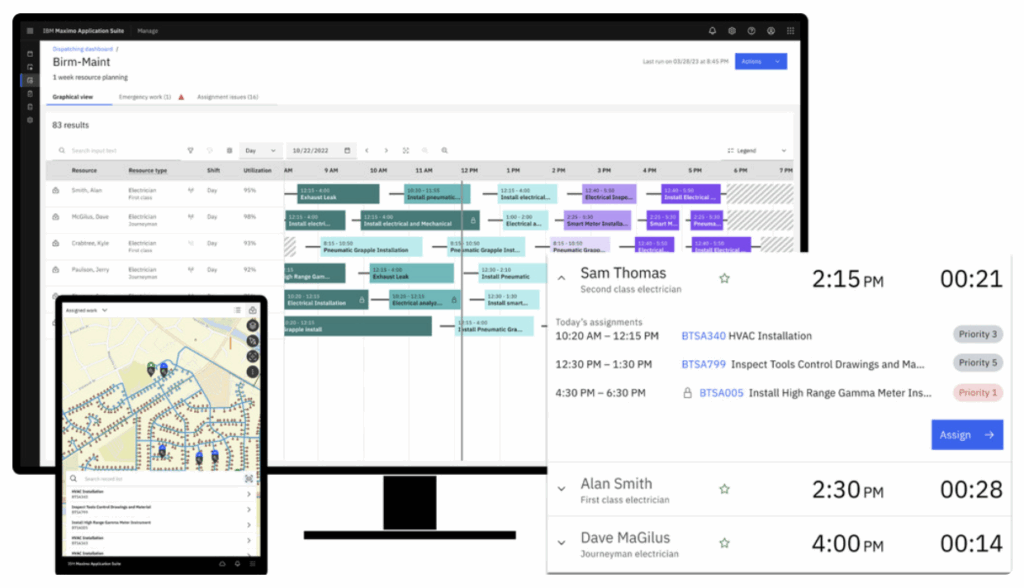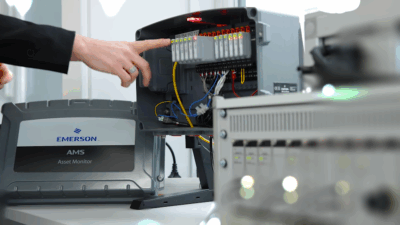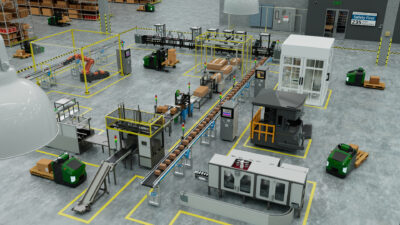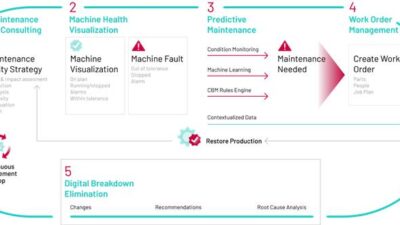To keep up with industry, manufacturers need to innovate quickly. Industry trailblazers are implementing predictive maintenance techniques supercharged with artificial intelligence (AI) for more efficient operations.

Maintenance insights
- Shifting maintenance efforts from preventive to predictive has become a business imperative for success in asset intensive industries.
- Manufacturers need to adopt cutting-edge technology that easily integrates with traditional processes, Asset lifecycle management (ALM) will be key for this era of seamless innovation.
- As agentic AI becomes more prevalent, organizations should seek this tool to complement human expertise and drive efficiency.
For asset-intensive industries such as manufacturing, organizations are always seeking new ways to improve their operations. Often, manufacturers have long-established processes to maintain their assets such as deploying condition-based maintenance techniques to keep their conveyor belts and assembling machinery running. For many, these systems have yielded positive results for decades so they may be hesitant to change them and want to avoid any unnecessary disruptions.
Manufacturers who want to stay ahead of the pack will invest in ways to seamlessly incorporate innovation into these systems. Asset life cycle management (ALM) techniques powered by artificial intelligence (AI) are crucial to optimizing their asset maintenance and enhancing results.

To take it one step further, those shifting from preventive to predictive maintenance –– with the help of AI-powered technology – are already seeing more efficient, sustainable and resilient operations.
Traditionally, organizations relied on reactive maintenance, waiting for a machine to break down or preventive maintenance, inspecting assets at a set time each month. These approaches can waste resources, time or both.
Predictive maintenance, however, is the process of using historical data, analytics and internet of things (IoT) to anticipate when assets would fail and plan maintenance activities accordingly. In simple terms, this approach is all about collecting the right information and sharing it at the right time to empower the right people to act. This approach helps head off defects and failures before they occur, avoiding unplanned asset downtime and helping to achieve further operational efficiency.
One IBM client, Spendrups Bryggeri, is leveraging technology that helps the brewery deploy predictive maintenance techniques to enhance its sprawling maintenance operations. This Swedish brewing giant wanted to create a new set of best practices while being mindful of its pre-exiting working methodologies. By introducing technology such as mobile features that showcase critical asset information on the go while heavily engaging its staff, the company were able to seamlessly incorporate AI-powered solutions into its day-to-day work. Thanks to AI-powered software, Spendrups Bryggeri collects equipment data, proactively identifying issues and empowering the team with the information they need to maintain production equipment in peak condition and extend the machine’s life spans.
Predictive maintenance as the heart of ALM
Predictive maintenance is part of a broader approach to manufacturing called ALM. ALM entails the careful monitoring of assets such as machinery, warehouses or fleets of vehicles across their full life span – from their very first usage to their last day on the job.
Tools like IoT sensors are used to monitor assets at scale and in detail, collecting real-time insights that build into a rich, historical data set on that specific asset. That data helps companies engage in predictive maintenance.

For example, sensors and cameras can be installed to monitor an assembly robot and its performance data can be displayed via specific dashboards. An organization may choose to invest in AI-powered technology that can analyze this historical data and pinpoint when the robot will need to be serviced or an arm be changed and why. Then, employees can plan this maintenance work accordingly and ensure the necessary equipment backups are available to avoid downtime as much as possible.
Businesses who can effectively capture, understand and harness the data from their assets will excel at ALM and see the best results when implementing predictive maintenance and outcompeting those who don’t.
Asset data can become overwhelming without the proper tools to collect and analyze it. To mitigate this, organizations should invest in technology that can collect, compile and analyze data for easier analysis. This type of software can then use analytics and AI –– including generative AI – to transform this data into predictive intelligence, automated workflows and help with strategic decision making.
How AI will change the manufacturing industry
AI-powered tools are becoming the new normal and are enhancing the way manufacturers work. Because the insights provided by AI can predict future asset disruptions and recommend maintenance accordingly, employees will need to adapt to this new way of working. There will be less need for manual inspections or data entry. Instead, generative AI can enable features like notifying technicians that a specific asset should be serviced and why according to historical data. Only then would the technician go to inspect that specific machinery and make the necessary adjustments for optimal performance.
Many are concerned that more advanced AI technology, such as AI agents, may replace human expertise. However, AI acts as a supplement for tasks, freeing up employees from repetitive manual tasks so their time can be better spent. For example, an AI agent can comb through historical data and alert a technician to predict that a specific asset will to malfunction and when, open a work order and provide a suggestion as to the cause for the issue. The employee will still need to inspect the asset, verify the malfunction and approve the suggested cause. However, this process is simplified thanks to readily accessible historical data displayed in an easy-to-read dashboard.
Another example of how AI agents can complement human expertise is by empowering technicians with specific maintenance information. AI agent technology can be trained with troubleshooting information specific to the make and model of the assets in a factory and bring these up upon detecting a specific type of failure. An expert will then need to be deployed to conduct the repairs, and the agent can even walk them through the recommended steps to follow if needed.

How manufacturers will use embedded AI for maintenance
While manufacturers continue to face an ever-changing landscape, they should continue to seek different ways to stay nimble. New innovations such as chatbots that help understand an asset’s performance or agents that can kickstart an inspection with the press of a button are emerging are coming. Manufacturers that invest in successfully embedding AI into daily operations will stay ahead of the pack.




